Music—and guitar—are therapeutic. The songs we write and riffs we play help reduce the pain, alleviate the stress, and produce some positivity in our lives. Microwave's singer/guitarist/lyricist Nathan Hardy has been using the studio and stage as his leather couch for nearly 10 years.
Stovall, in 2014, saw him question his Mormon missionary upbringing. Two years later, Much Love focused on realities versus the romance of the rock 'n' roll lifestyle. And 2019's Death Is a Warm Blanket is a dark, heavier, raging deep dive into his nihilistic thoughts. All three albums are honest, coarse evaluations of the pushing and pulling in Hardy's head and heart.
Musically, the band has matured alongside Hardy's contemplative subject matter. Stovall and Much Love harness the teeter-totter dynamics mastered by Nirvana and also felt in Microwave's post-hardcore contemporaries like early Citizen and Turnover.
While their loudest, most aggressive tendencies were unleashed in Death Is a Warm Blanket, Microwave's melodies and hooks can still be sticky and sweet as honey. Finally able to tour in support of that album, Microwave packed Nashville's Mercy Lounge on October 15. Just after soundcheck, Hardy and guitarist Travis Hill introduced PG to their favorite battle axes, walked us through their Odd Couple pedalboards, and Hill explained how an outdated laptop and trial version of Logic Pro provides a universal "poor man's Kemper" for guitars and bass.
[Brought to you by D'Addario XPND Pedalboard: https://www.daddario.com/XPNDRR]
Classic Cruiser
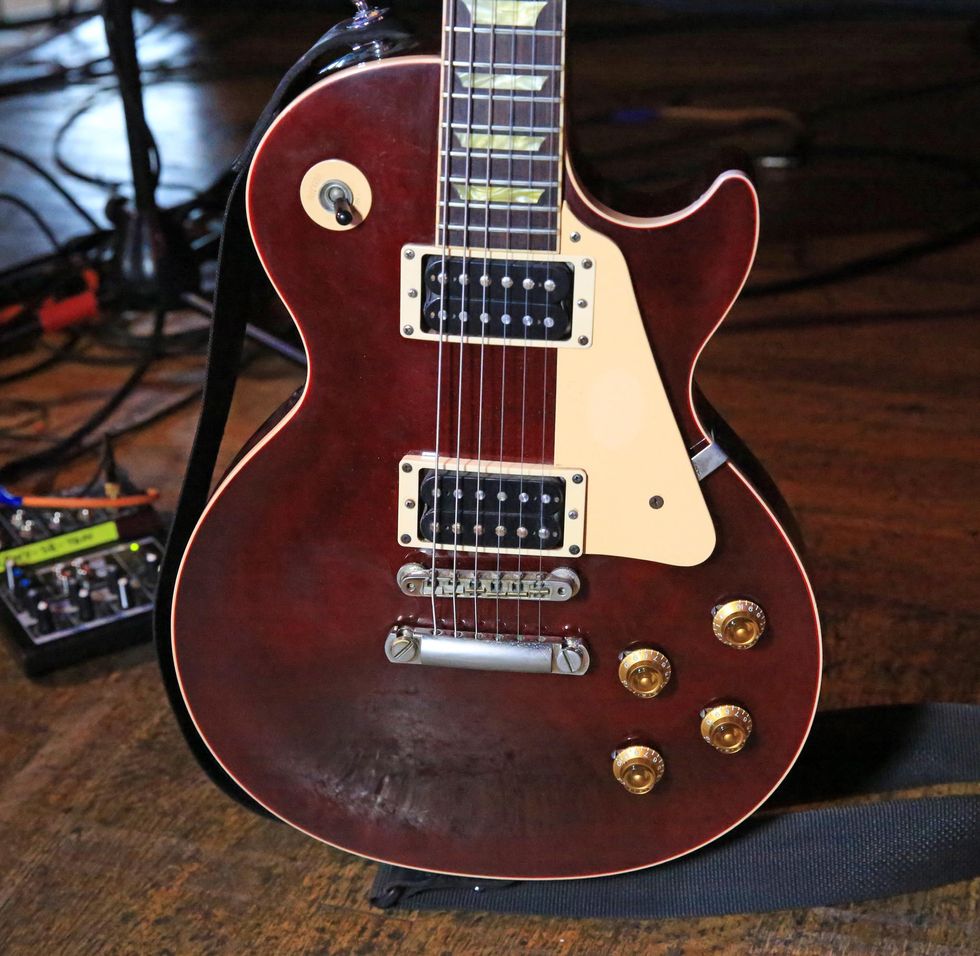
Travis Hill took just one guitar with him during Microwave's fall U.S. tour—his beloved early 2000s Gibson Les Paul Classic 1960 reissue. (A guitar he swears he'll never sell.) The wine red beaut is completely stock including its 496R and 500T humbuckers. It takes Ernie Ball 2215 Nickel Skinny Top/Heavy Bottom strings (.010–.052).
Logic-al Logistics
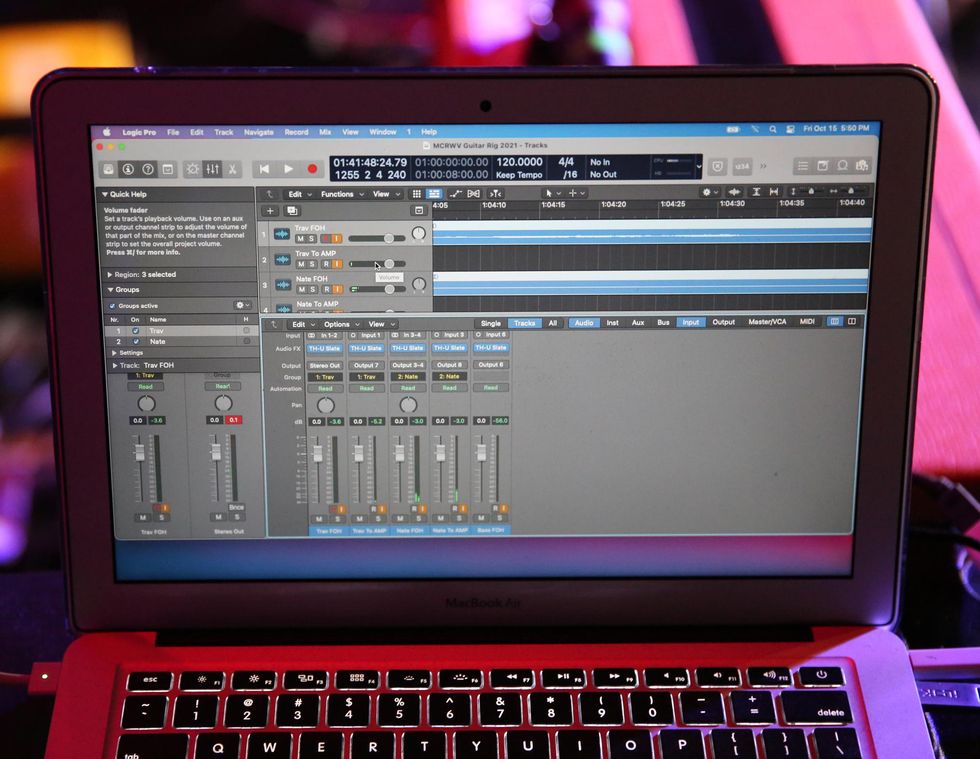
The band practices in Atlanta using the Overloud plug-in on Pro Tools, and they're accustomed to its amp tones. Nathan wanted to travel with Kempers, but Travis suggested he could run guitars and bass through a free, bundled Slate version of Overloud via a trial version of Logic Pro and an old Focusrite Saffire Pro. Bass has one track, Nathan has two, and Travis has three with two going to FOH and one hitting his onstage cab for monitoring and feedback.
I Gotta Be Heard

While most of Hill's tone gets pumped through the PA and into his in-ear monitors, he still does require stage noise for live monitoring and feedback. He takes out the Orange Rockerverb 50 combo (bypassing its circuitry) and treats it like an extension cab. He prefers the open-back design and hasn't touched the stock Celestion Vintage 30s.
Organized Filth
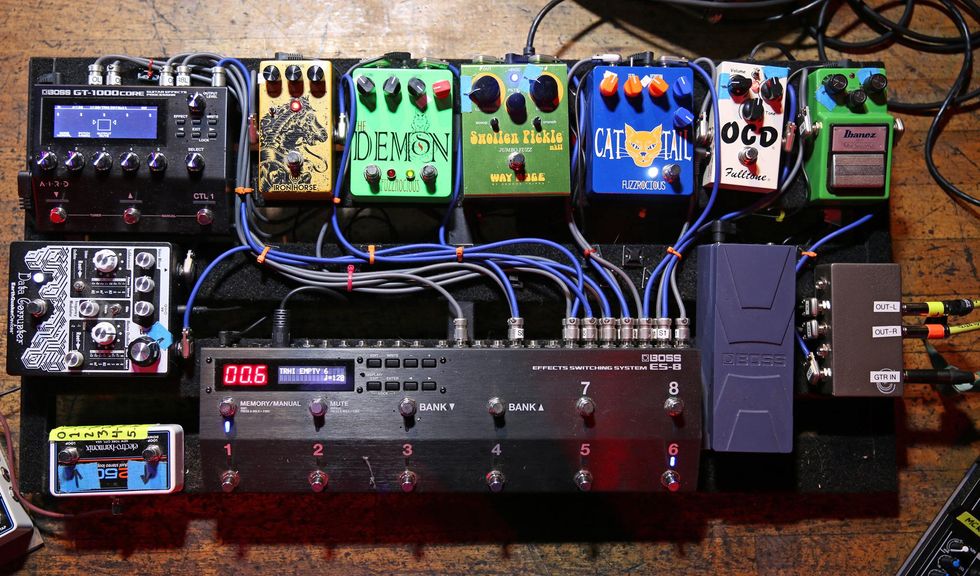
The majority of Travis' tone comes from here. And at a quick glance you have two takeaways: He loves grimy gain (see the top row) and keeps a tidy workspace. His Ibanez TS9 Tube Screamer is always on. ("It's just a slight push, but you notice it when it's not there.") The other top-row terrorizers are a Fulltone OCD, Fuzzrocious Cat Tail, Way Huge Swollen Pickle, Fuzzrocious Demon King, Walrus Audio Iron Horse, and, off to the side, an EarthQuaker Devices Data Corrupter. Anything that includes repeats, modulation, and clean sounds is supplied by the Boss GT-1000CORE. For maximum control, he has a Boss ES-8 Switching System and Boss EV-30 Dual Expression pedal.
Addendum Effects
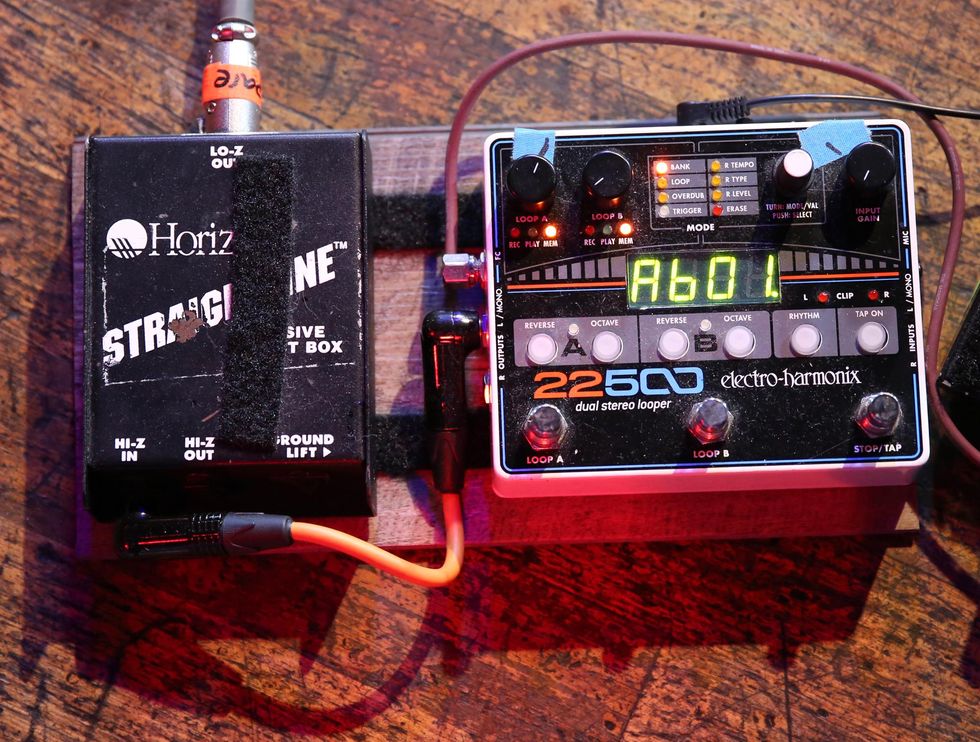
Off Travis' main stomp station is an auxiliary board that holds a RapcoHorizon Straightline Passive Direct Box and an Electro-Harmonix 22500 Dual Stereo Looper that keeps some pre-recorded tracks.
Go For the Gold!
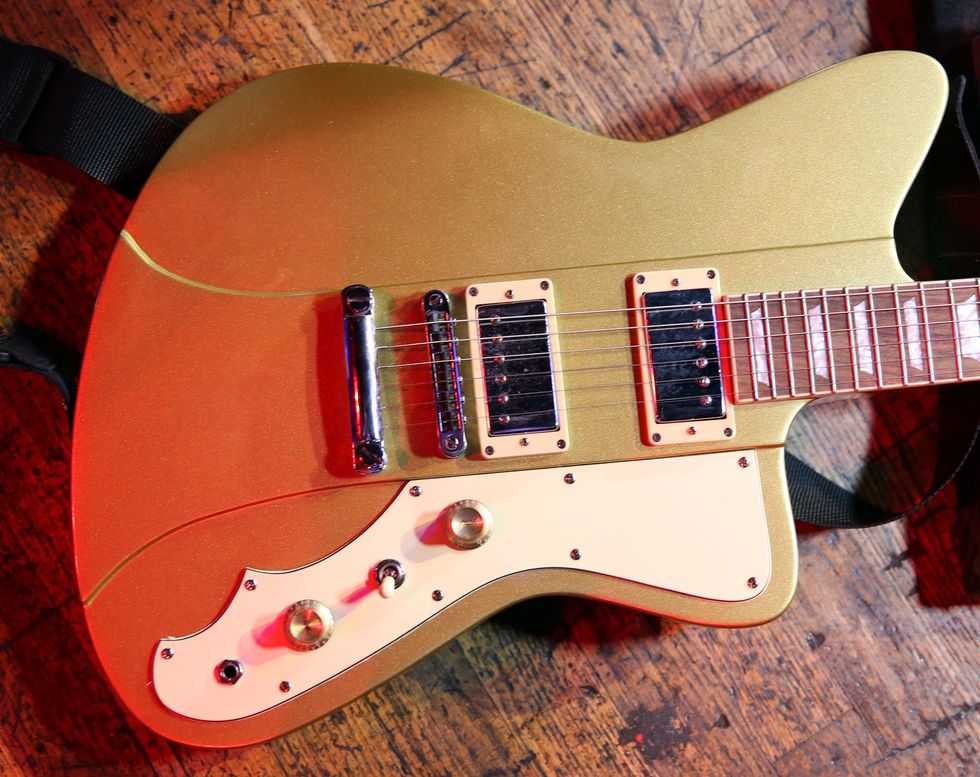
Frontman and Microwave cofounder Nathan Hardy unsuspectedly strolled into Atlanta's Earthshaking Music and walked out with this Rivolta Guitars Mondata II HB finished in a marvelous capo gold. The used score still has its original Rivolta "Brevetto" PAF-style humbuckers. Other highlights include a mahogany body—with a raised center block à la a Firebird—and a maple neck paired with a pau ferro fretboard.
Baritone Bruiser
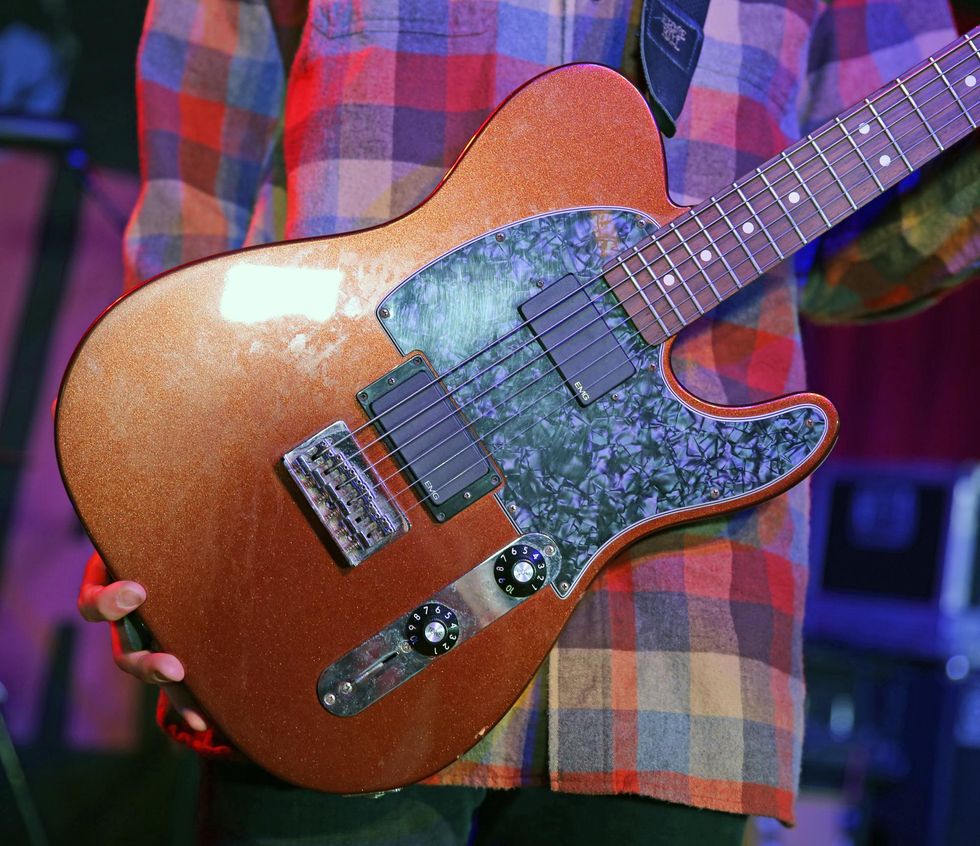
Microwave's 2019 album Death Is a Warm Blanket requires some beefy bari parts, so Hardy found this Fender Blacktop Baritone Telecaster that originally started life in an HSS format. When he bought it, the previous owner had swapped in a set of TV Jones Filter'Trons. To better fit the crisp heaviness Microwave heats the stage with, Hardy had a tech friend drop in a set of EMG 81/85s. Nathan employs Ernie Ball 2220 Power Slinkys (.011–.048).
Nothing Stays Forever
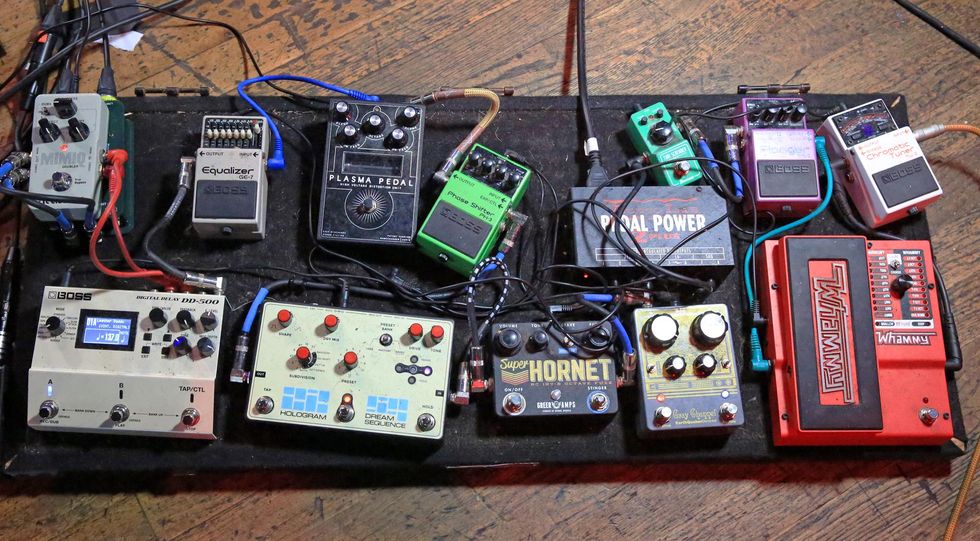
If Travis Hill's pedalboard is Felix Unger, then Hardy's has to be Oscar Madison. Nathan admits in the Rundown that everything on his board has an expiration date. He loves swapping in and out stomps, chasing perfect pedal pairings. The current construct of his tone-tweaking platform harbors some powerfully paranormal boxes—specifically the Gamechanger Audio Plasma (high-voltage distortion pedal) and the Hologram Electronics Dream Sequence (sequencer, envelope shaper, pitch shifter, sampler, and more). The rest of the pedals are fairly standard: Boss BF-3 Flanger, DigiTech Whammy, Ibanez TS Mini Tube Screamer, EarthQuaker Devices Gray Channel, Greer Amps Super Hornet, Boss PH-3 Phase Shifter, Boss DD-500 Digital Delay, Boss GE-7 Equalizer, and TC Electronic Mimiq. The pair of guitars are kept in check by the Boss TU-2 Chromatic Tuner and a Voodoo Lab Pedal Power 2 Plus juices the pedals.
Singing Stomps
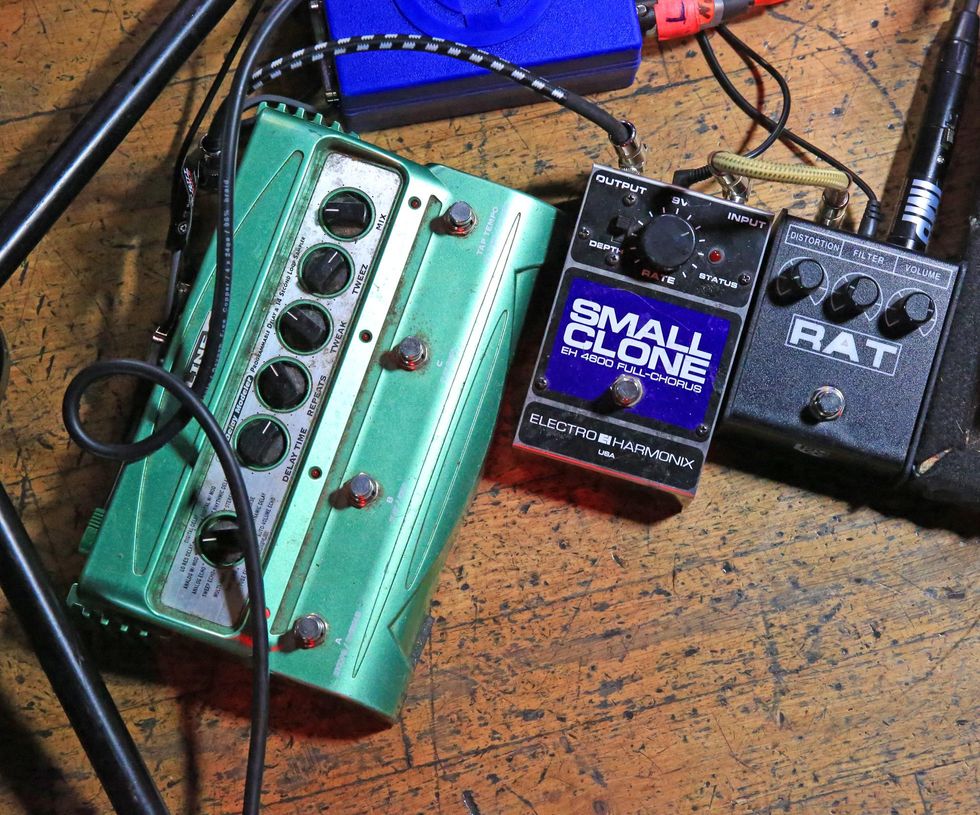
Hardy hits his voice with some effects from the Line 6 DL4, Electro-Harmonix Small Clone, and Pro Co RAT.




![Rig Rundown: AFI [2025]](https://www.premierguitar.com/media-library/youtube.jpg?id=62064741&width=1245&height=700&quality=70&coordinates=0%2C0%2C0%2C0)

















![Devon Eisenbarger [Katy Perry] Rig Rundown](https://www.premierguitar.com/media-library/youtube.jpg?id=61774583&width=1245&height=700&quality=70&coordinates=0%2C0%2C0%2C0)


















































